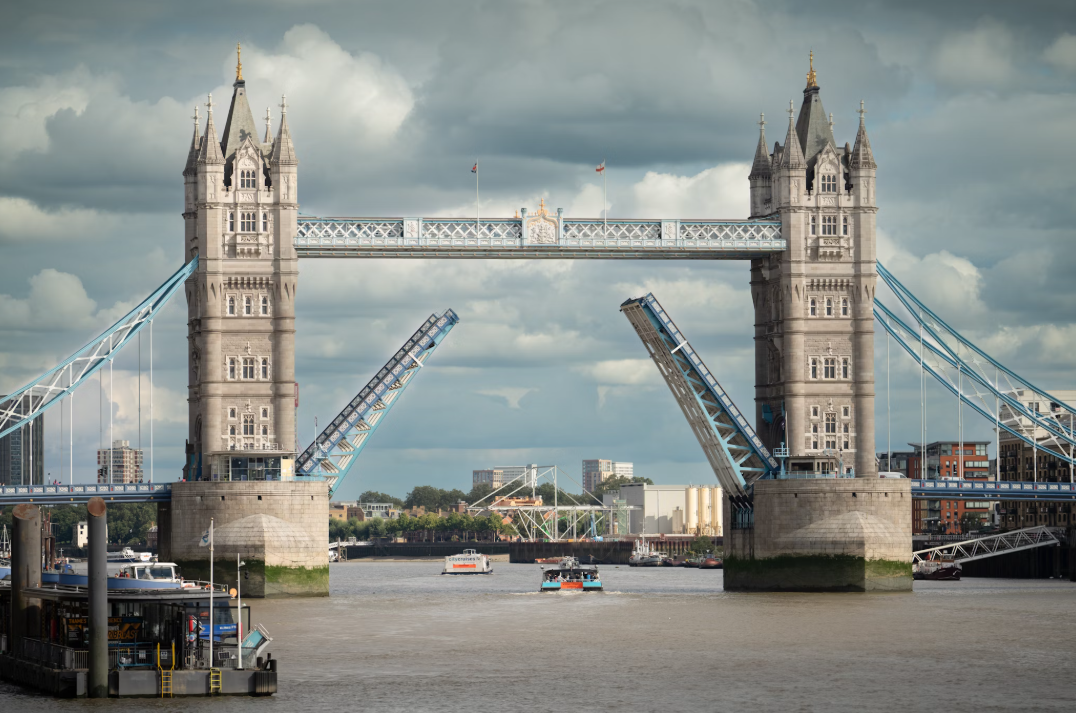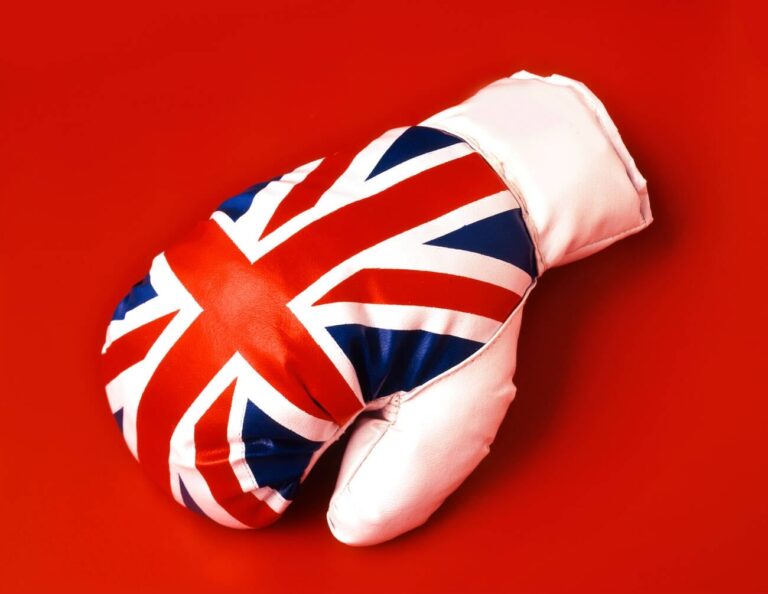The History of Tower Bridge
Tower Bridge, which was constructed between 1886 and 1894, is a striking example of Victorian engineering due to its unique design and striking moving parts that allow the bridge to fold up so that boats can pass through safely. The bridge spans the River Thames and links the boroughs of Southwark and Tower Hamlets.
London attracts around 30 million tourists from around the world every year, making it one of the most popular locations for travelers worldwide. Whether they’re going to see Big Ben, the London Eye or the Tower of London, there’s something for everyone but there is perhaps no bigger tourist attraction than Tower Bridge. While it looks grand and amazing, Tower Bridge is more than just aesthetically pleasing as it is also drenched in history.
Over 50 designs of Tower Bridge were submitted to the Committee for consideration, some of which are on display at the location, before choosing the final design that has been a pillar of London ever since. From the design process to the development of the site throughout the years, there is a lot of lore surrounding the famous bridge. We will explore this throughout the article.
Continue reading for an in depth look into the complete history of Tower Bridge and why it has become such a renowned landmark for tourists who have made the journey over to the capital city of the UK.

Tower Bridge Construction
The chosen design for Tower Bridge was finalized in October 1884 after it was created by Sir Horace Jones, the City Architect, in collaboration with Sir John Wolfe Barry. Unfortunately, Jones passed away in 1887, which led to George D. Stevenson taking over. He opted to change the original brick facade with the iconic Victorian Gothic style that made the bridge famous. It cost over £1million to finish building the tower.
The construction began on April 22, 1886. After eight years, Tower Bridge was completed with the help of five major contractors and 432 construction workers each day of the process, as well as the use of various plant hire solutions. This was done under the eye of Sir John Wolfe Barry, who helped with the final design.
Both piers were built on foundations sunk into the riverbed to support the construction and the framework is made up of over 11,000 tons of steel for maximum structural strength and integrity. This was then clad in Cornish Granite and Portland Stone to protect the steelwork and keep it looking in good condition.
Here is some extra information about the construction of Tower Bridge:
- The gold gilded crests on top of the Towers are almost 63m above road level
- The central span length between the Towers is almost 66m
- There is an 8m depth for the foundations that are sunk into the riverbed
- Over 30million bricks were used to complete the bridge
- The number of bridge lifts per day could reach up to 64
- A bundle of hay was suspended from Tower Bridge during any construction to alert ships
Tower Bridge officially opened on 30 June 1894 by the Prince and Princess of Wales at the time. It is still considered to be one of the greatest feats in British engineering and architecture during the 19th Century.
How Tower Bridge Operates
At the time of completion, Tower Bridge was the largest and most sophisticated bascule bridge ever completed which was a major breakthrough for the engineering industry. Hydraulics were used for the bridge to ensure it operated optimally. These hydraulics used steam at first for it to be powered, as a powerful method had to be used due to the size of the pumping engines but this has since been driven by oil and electricity rather than steam as of 1976. The original pumping engines, accumulators and boilers are now on display at the bridge.
Six large accumulators were used and these fed the driving engines that helped the bridge move up and down when needed. It took 60 seconds to rise to 86 degrees, which is the maximum.
Key Dates
1886
The construction of Tower Bridge began on April 22.
1894
Tower Bridge was officially opened by the Prince and Princess of Wales, Albert and Alexandra Edward, on June 30.
1910
High-level walkways were removed due to lack of use. These were implemented to ensure the public could still cross the bridge while it was raised.
1912
On August 10, Frank McClean flew between the bascules and the high-level walkways in his Short seaplane. This was one of the most famous British stunts of the early 20th century.
1949
Following World War 2, Tower Bridge was installed with a new roof after suffering minor damages during the Blitz that lasted around 8 months. Restoration started this year and lasted until 1952. Westmorland Green slate was used for the roof restoration, which replaced the original Welsh slate roof that was used for its first iteration.
1952
The bridge began to rise while the Number 78 London bus driven by Albert Gunter was heading across it. He had to jump from one bascule to the other to save his own life.
1976
The stream-powered system was ditched in favour of electrified hydraulics to keep up with modern technology.
1977
Tower Bridge was given a new coat of paint, as it left behind its chocolate brown colour in favour of red, white and blue. This was done due to it being the Queen’s Silver Jubilee. It has kept the new colour scheme to this day.
1982
For the first time since 1910, Tower Bridge became open to the public as an attraction. This allowed people to enter Tower Bridge to see the permanent exhibition inside that shows a lot of the bridge’s history.
2012
The Olympic rings were suspended from the walkways to celebrate the Olympic Games being hosted by London. A helicopter also flew through Tower Bridge during the Opening Ceremony with James Bond and ‘The Queen’ inside.
2019
Celebrations for the 125th anniversary of the completion of Tower Bridge commenced in June with there being many activities going on during the month.
Impact on London
Tower Bridge is one of the most famous structures in the city and has had a big impact on London culture. Let’s take a closer look at how.
Transportation
Over 40,000 people use Tower Bridge every day, making it a vital link for drivers, cyclists and pedestrians. To get from one side of the River Thames to the other. This has improved the connectivity of the city and has helped improve the sense of community between towns on either side of the river. Before the bridge was constructed, the only way to get from one side of the river to another was via the Tower Subway which has a 1p charge to monitor the traffic.
Engineering Marvel
Tower Bridge serves as a reminder of the achievements of UK civil engineers and is regarded as an engineering wonder still to this day. It was constructed in 1894 to facilitate ship access to the Pool of London ports while also enhancing road traffic. To let ships pass, the bridge’s movable lanes were raised and it was an impressive engineering feat when it was first constructed.
Landmark
One of London’s most beloved icons and a well-known landmark is Tower Bridge. It is a well-liked tourist destination with elevated walkways providing expansive city views to all tourists that come to visit it.
Fun Facts About Tower Bridge
There are many Tower Bridge facts for you to sink your teeth into. Here are some of the more fun facts for you to enjoy:
- Tower Bridge’s name was inspired by the Tower of London from centuries earlier.
- Around 40,000 per day use the bridge.
- Former US President Bill Clinton once waited 20 minutes for a barge to sail underneath the bridge just so that he could experience crossing it.
- The bridge is 244 metres long and 65 metres high.
- The walkway of Tower Bridge has a glass floor that allows visitors to stand 42 meters above the River Thames.
- About twice a day, or 800 times a year, the bridge opens its bascules.
- In 1894, the bascules were raised 6,194 times during its first year of operation.
- The walkways were closed in 1910 due to it becoming a crime hub.
Tower Bridge Today
The bridge has undergone high levels of modernisation and engineering upgrades since it was first constructed, which has changed the way that it operates. Electricity has been implemented to make the bridge operate more efficiently. This has also reduced the carbon footprint of Tower Bridge, as it ditched the steam-powered option. To further improve the sustainability of the bridge, it received energy-efficient LED lights, showing off its beautiful architecture whilst saving energy.
Tower Bridge’s continuous maintenance and preservation for future generations is entrusted to engineers and construction workers who work a schedule to ensure that it’s up to the required standards. Painting, cleaning and replacing components that are necessary for its operation are all part of routine maintenance.
From 13 January until early March 2025, the North Tower Lift will be out of service for scheduled maintenance. Tower Bridge has stated that you have access needs, please plan your route before your visit by checking their website. On arrival at the attraction, it is suggested that you speak to a member of staff who can help you with any issues you have during your Tower Bridge experience.





